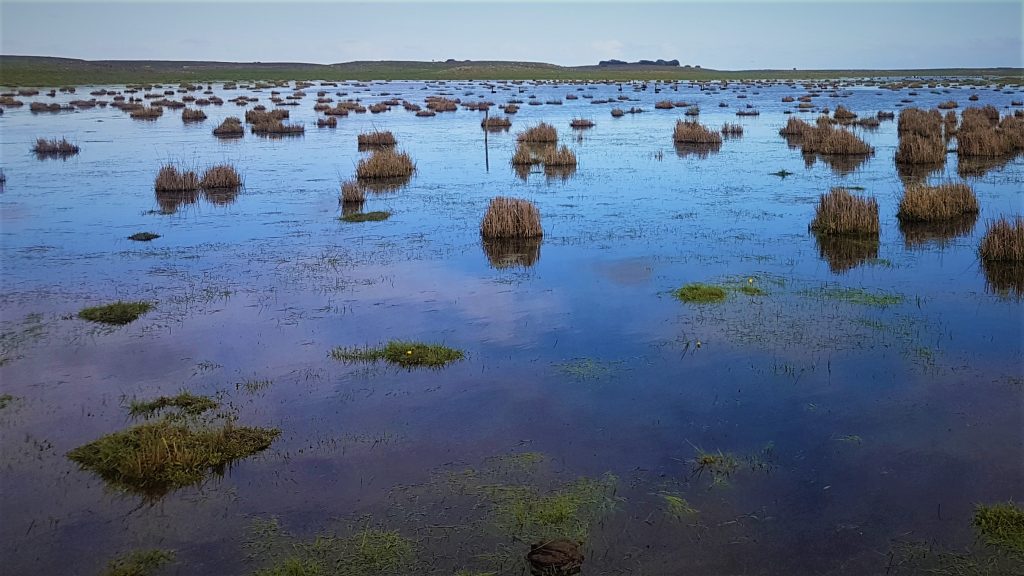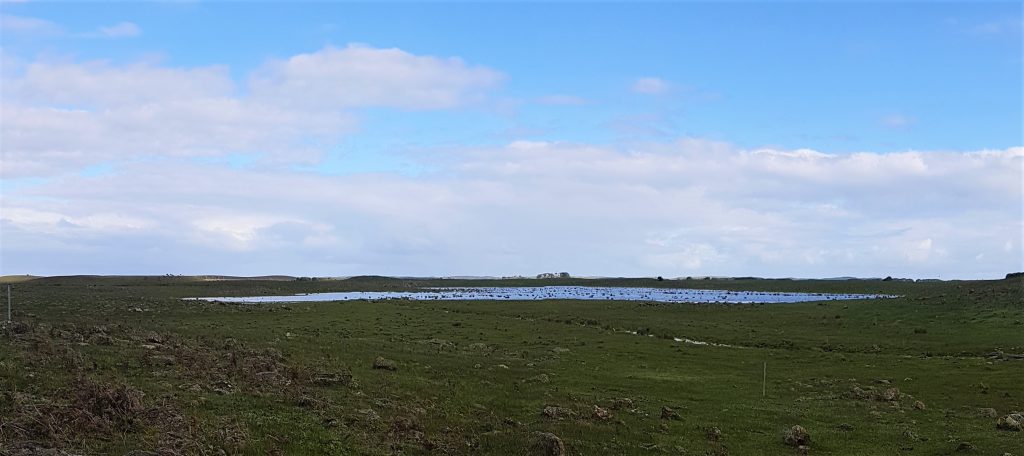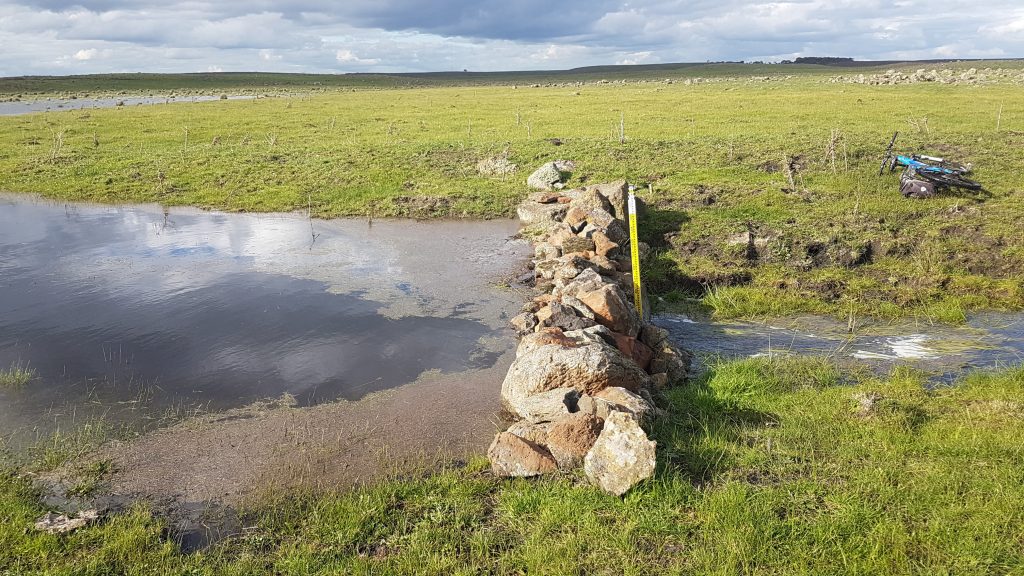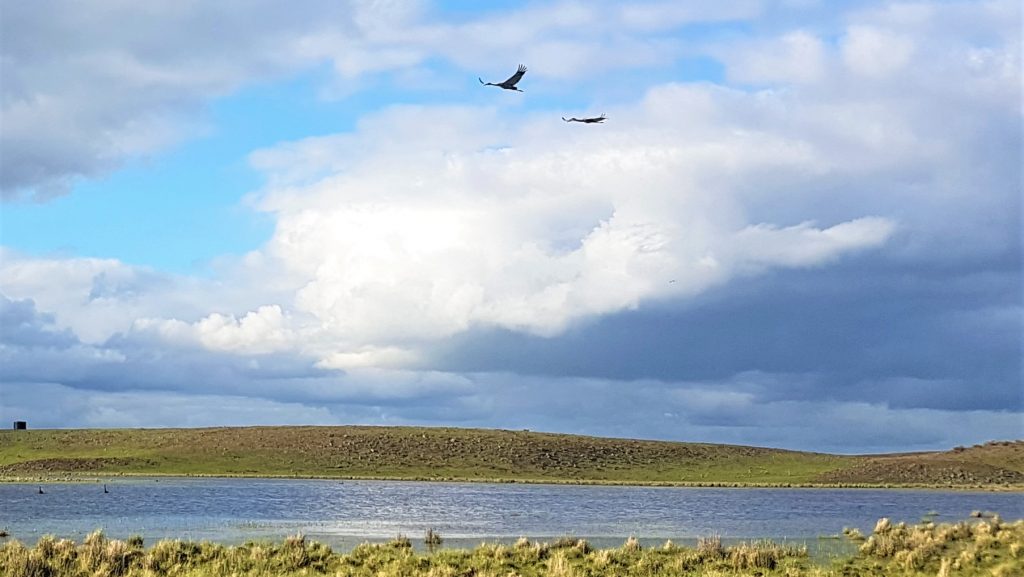Wetland restoration ‘rocks’!
This year we have been delivering an Australasian Bittern habitat restoration project which is supported by Glenelg Hopkins CMA, through funding from the Australian Government’s National Landcare Program. A few months ago I wrote a short article about works we had undertaken at Aringa North, just north of Port Fairy, in western Victoria. The concept was somewhat novel, moving away from our tried and trusted use of geo-fabric sandbags, to just putting back in place a number of the basalt rocks which had been ripped from the earth during drain excavation.
A few visits after our work work was completed and there really wasn’t a lot happening yet. Maybe a marginal difference in water height upstream and downstream but certainly not the spectacular re-inundation we had seen elsewhere. The drains in other parts of the property were flowing and one of our previous restoration sites was booming, but the water just hadn’t made its way to the lower parts of the farm.
But now in September 2019, I can see this is all part of seasonal variability, and it highlights just how important it is to get out to sites regularly to watch, and learn.
At the start of August, the Southern Ocean threw up an almighty front, widespread low-level snow and some good rain across the south-east of the country. I was a little surprised that the local weather stations had only recorded around 30 mm of rain from the system, given how much water was lying around and the stream rises which occurred. But it did get me thinking that I needed to get back out and check on our latest project site.
Suffice to say, my site visit two weeks later was very rewarding. I decided to take the mountain bike in from the top of the local catchment, just to get a better understanding of how the flows were moving in. On coming over the final rise I was greeted with a wonderful vista – the wetland was full of water. In fact more water than I had really thought possible.
I walked (too soggy to ride!) around the edge of the wetland, checking where the water was up to and how the inflowing drain was behaving. Everything matched up perfectly. Despite the tendency for stone weirs to be fairly leaky, we had achieved a very good seal to limit artificial drainage and achieve what would be close to a natural sill level for this particular wetland.
Monitoring the success of a wetland restoration project is a long-term job, and in this instance true success will be confirmation of Australasian Bitterns using the site. However, the crucial first step is just trying to get some water back in the landscape where it used to be, hold it there for long enough to trigger a response in the vegetation, and with that, provide habitat for all those wonderful wetland critters.
Over the coming months I will heading back out to count birds and measure the plant response, so hopefully there will be more good stories to tell. But for now I will leave you with one final picture that sums up what was a great day. I was sitting there on the phone, reassuring the landholder that the dodgy looking bloke his neighbour had seen on the northern boundary was in fact me, when a pair of brolga flew right past me! Close enough to be able to get a reasonable snap on said phone.
So at least we know one threatened species is already benefiting in the short-term.





